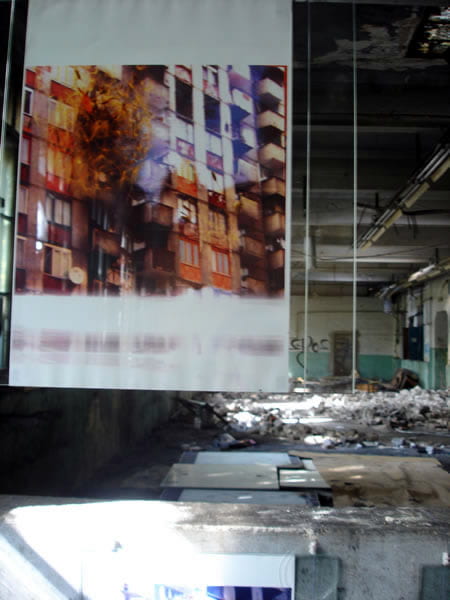Melancholia of the Departure Gates
I arrive at the departure gate, just another jetlagged transit passenger who failed to travel light. A young businessman with a perfect hairdo sits alone, hiding behind the morning paper. His solitude is so plausible that I do not notice at first that he is a piece of art. It is early morning in the Munich airport, but I am caught in the twilight zone of another continent. Thank God for the espresso bar “Pisa,” decorated with the familiar ruin of a leaning tower. By inertia, I look for the windows, but there is not much to see there, a series of superimposed frames, a palimpsest of panoramas.
Outside is the no-man’s land of shabby tech, ruined scaffoldings, rolling staircases to nowhere, shuttle buses and old aircraft with flowers painted on their wings. Remember where you’re going but forget how you’re getting there.
And please don’t stare into space.
Ensconced in the ruin’s comforting shadow, I observe the chance encounters at the departure gates. A man passes by a woman waiting; he slows down, her disheveled hair trembles in the breeze of the air conditioner. Or are these mere reflections? Have they met before? Is this their last chance?
The airplane staircase magically appears at the top of the leaning Tower of Pisa, making it look like a reconstructed Tower of Babel. You wish you could freeze that perfect image and just go up.
But alas, my camera takes pictures in Multiburst, recording 16 seconds of slow disenchantment. The objects in the mirror are further than they appear. It is boarding time, and that Pisan espresso has left nothing but emptiness and heartburn in my stomach. The in-flight magazine informs me that the tower of Pisa has been made more “stable” but it will soon undergo a new face-lift. Of course, they would never try to set it straight, but make it lean a little more, in a safer picturesque manner, casting short shadows upon the landscape of sleepy loci amoeni, agriturismo, industrial ruins and Saturnian hot springs.
Airport architecture is all about light and function, visibility and convenience. But the truth is that your journey is neither transparent nor revealing. Old train stations looked like cathedrals of progress with steel, skeletal apses. Airports resemble shopping malls or casinos with no obvious exit: you travel from sign to sigh, some of it duty-free. In the disorienting space of the airport, with its unreadable panoramas and competing signs, I find comfort in the familiar image of the leaning tower of Pisa, the best-preserved ruin in the world.
Ruin literally means “collapse” —but actually, ruins are more about remainders and reminders. A tour of ruins leads you into a labyrinth of ambivalent prepositions–“no longer” and “not yet, “”nevertheless,” “albeit,” and “still”–that play tricks with causality and mediate between syntax and parataxis, between metaphor and metonymy.
When nostalgia was first diagnosed as a disease, Europe was struck by an epidemic of feigned nostalgia that was just as difficult to cure as the actual one. In the history of architecture, the fashion for ruins and the discovery of archeology went hand-in-hand with the construction of artificial ruins. Moreover, artificial ruins of the mind might have anticipated the archeological discoveries. They were never mere simulacra, but rather allegories for contemporary worldviews.
What kind of optical device do we need to examine the ruins? While the fascination for romantic ruins and the panorama craze were contemporary at the turn of the nineteenth century, at first glance they suggest contradictory visions. The ruin was about fragmentation, attention to the particular cracks and traces of time. The panorama was about all- encompassing views. And yet they depended on one another. Both had to do with a new perception of the horizon, not only spatially but temporally. The ruin like a panorama offers us a wide (if not all-encompassing) vision of time. They speak about Pasts Imperfects and Futures-in-the-Past but also create exciting and porous architectural environments that invite both longing and critical reflection.
As for the Tower of Pisa, its origins and angles of inclination are still under dispute. There is a legend that its first architect wanted it to lean from the very beginning, making it into the first “artificial ruin.” The official “Leaning Tower of Pisa” website claims that the “genetic code” of the Tower is its connection to the “soil” rather than its picturesque quality. It was Mussolini who thought of turning it perfectly vertical, pouring cement into its soil only to provoke unexpected results and further sinking of the tower. On the other hand, the tower was saved at the end of World War II when Allied forces entered Pisa while many other towers were destroyed for fear of snipers’ fire. The shape of the famous leaning tower made it distinctive and memorable, as if resisting both correction and destruction.
